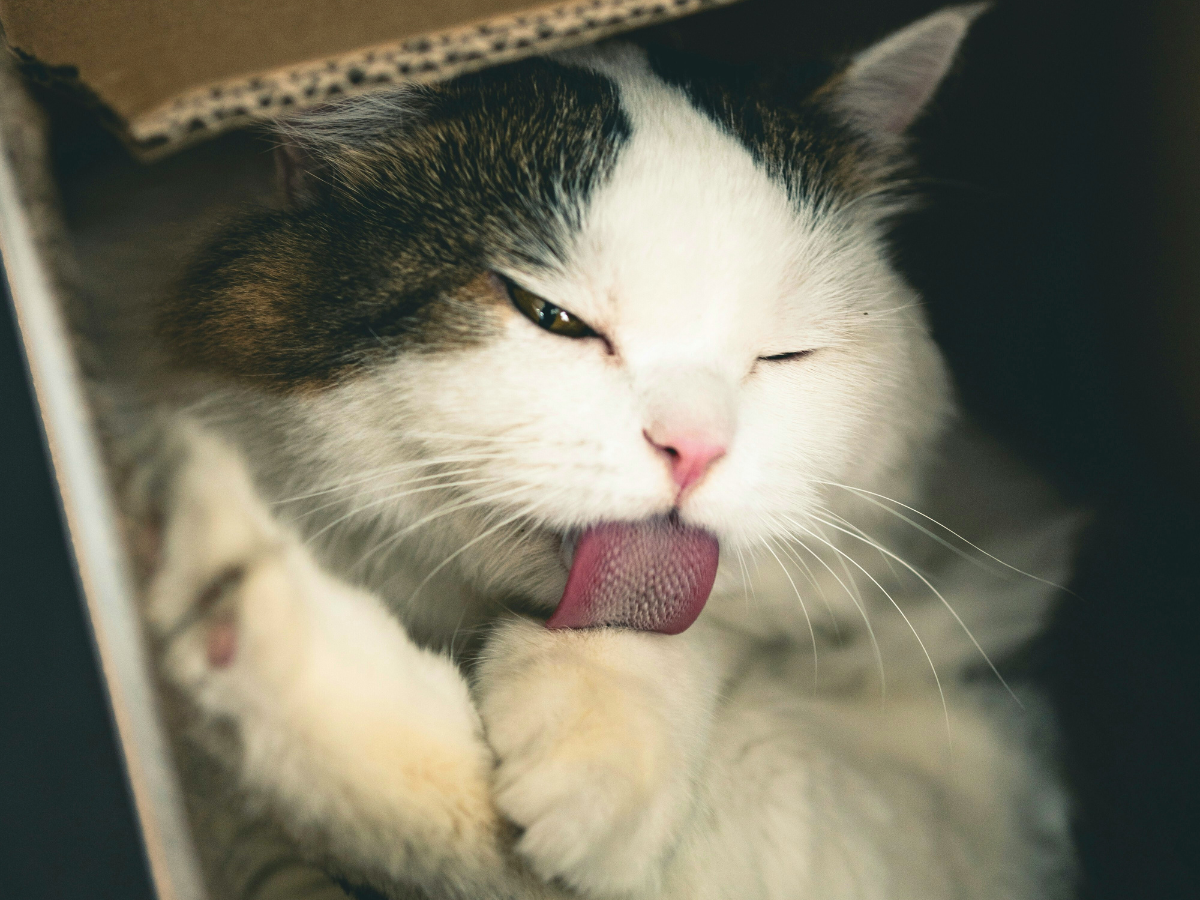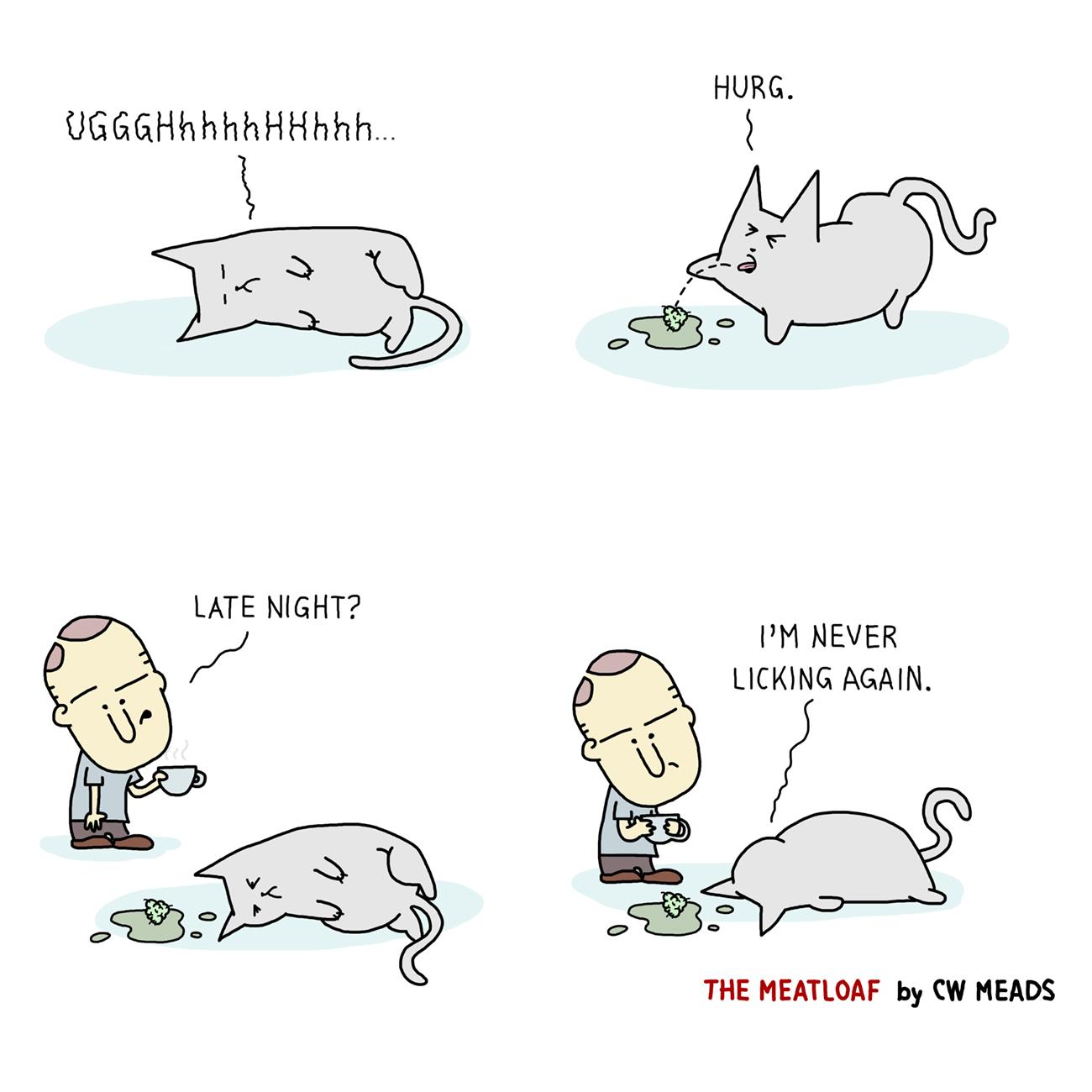The Gross Truth About Cat Hairballs
Article - 4 min read • Updated Jun 12, 2025
Medically reviewed by Dr. Claire Tan, BVSc (Qld.), BAppSc (Qld.)

What Are Hairballs in Cats
Hairballs (or trichobezoars, if you want to impress your vet) are clumps of fur that your cat swallows while grooming.
They usually end up shaped like soggy cigars — long, tube-like, and the same colour as your cat’s fur. Sometimes they’re mixed with bile or bits of food depending on how far they’ve travelled through your cat’s digestive system.

And here’s the funny thing — a hairball isn’t even a ball. It’s more like a hair sausage or tube. As that clump of fur travels up your cat's narrow oesophagus, it gets squeezed into a tube shape on the way out. Most hairballs are about an inch long, but they can stretch up to five inches in rare cases. Gross, right? To make it worse, they’re usually slimy with mucus, stomach juices, or green bile. Sometimes they even look like your cat missed the litter box. Even a light-coloured cat can produce a dark, gnarly hairball depending on what’s mixed in there.
Why Do Cats Get Hairballs?
Grooming is a full-time job if you’re a cat. With every lick, tiny backward-facing barbs on their tongue catch loose fur. That fur then gets swallowed.
Most of the time, it passes through their digestive system and comes out in the litter box.
But long-haired breeds such as Maine Coons, Persians, and Ragdolls (all popular breeds in Singapore) tend to swallow more fur, making them prone to hairballs.
What about kittens? Not so much. They’re still figuring out how to clean themselves properly.
Some cats may also groom compulsively because of boredom or stress, resulting in more hairballs.
When Hairballs Become a Problem
Here’s the thing: hairballs are usually harmless, but not always.
A healthy cat shouldn’t produce more than 1 hairball every week or two. More than that could mean something’s wrong - either with grooming habits, diet, or digestion.
And when hairballs don’t come up or out, they can lead to intestinal blockages, which can be dangerous or even fatal if left untreated.
Sometimes, hairballs aren’t just about grooming. Some conditions such as inflammatory bowel disease or intestinal cancers can slow everything down — including the movement of swallowed fur. That can lead to more hairballs piling up inside.
Even itchy skin problems like flea infestations or allergies will cause your cat to over-groom, swallowing more fur in the process. If your cat’s been obsessively licking their back end, infected anal glands might also be the culprit.
Another possibility is arthritis. Some cats will lick painful joints to comfort themselves. Here's the bottomline: if you’re seeing fewer poops, more fur in the litter box, or your cat’s just not themselves, it’s time to get your vet involved.
Signs Your Cat Might Have a Hairball Problem
Look out for:
- Coughing or hacking, especially after meals
- Trying to vomit but nothing coming up
- Hard poop mixed with hairs or constipation
- Diarrhoea
- Refusing to eat for more than a day
- Hiding or acting tired
Spot these signs? It’s time to get in touch with your vet.
How to Prevent Hairballs in Cats
Here’s how to help your cat keep that fur where it belongs — on their body:
- Brush your cat regularly. Especially if they’re long-haired or shedding.
- Add fibre to their diet. Special high-fibre cat foods help push fur through the gut.
- Enrich their environment. Play with your cat. Distract compulsive groomers with toys.
Important Note: Talk to your vet before using any remedies. Hairball pastes or treats might help, but not all products are suitable for all cats.
No laxatives unless prescribed. Seriously. Don’t DIY this.
Not Sure What’s Normal? Talk to Us!
One hairball now and then? Fine. Frequent hacking or vomiting? Not fine.
If you’re ever unsure, contact Gaia Veterinary Centre. We’re here to help your cat feel better and keep your floor furball-free.